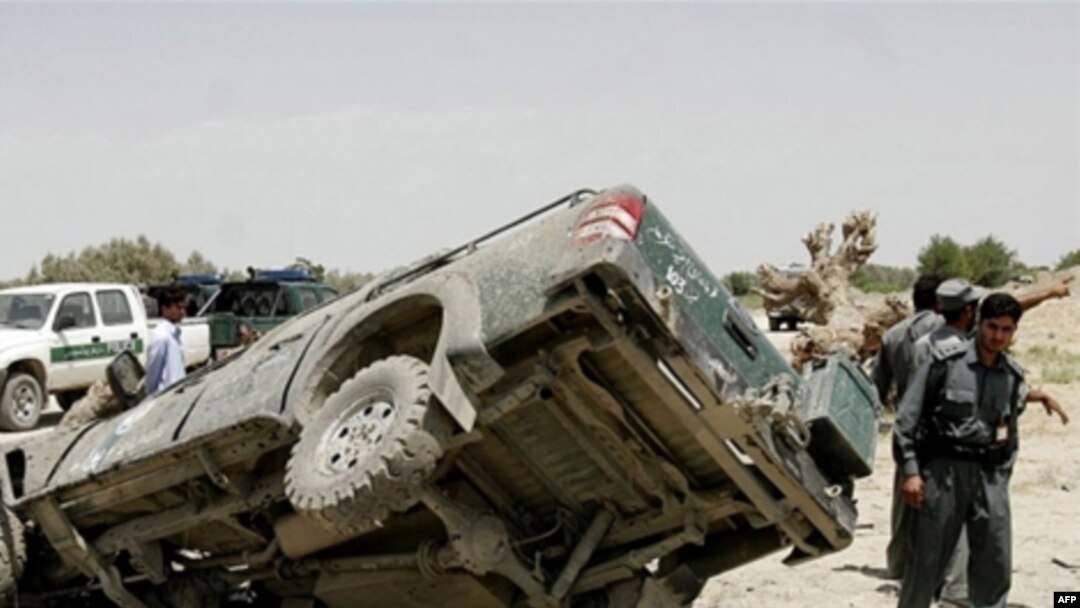WASHINGTON (Reuters) -- Roadside bomb attacks on U.S. and NATO forces in Afghanistan have risen sharply this autumn, reversing the seasonal decline that usually occurs with the onset of winter, according to Pentagon data.
The latest statistics for improvised explosive devices, or IEDs, show the number of incidents climbing 19 percent to 315 in November from 264 in October, with coalition casualties at 83 killed or wounded compared to 78 in October.
The data, made public by a Defense Department office set up to address the IED threat in Iraq and Afghanistan, said IED-related coalition deaths in Afghanistan fell to six in November from 13 in October but the number of troops wounded spiked to 75 from 65.
The figures do not provide a scientific measurement of attack trends but rather a snapshot of insurgent activity in Afghanistan, where violence levels are at their highest since the 2001 U.S.-led invasion.
An information chart showed autumn declines in roadside bomb incidents for three previous years -- 2005, 2006, and 2007. Last year, IED incidents declined from 274 in October to 188 in November.
The incidents, as reported by the Pentagon, include bombs that were disarmed or exploded without hurting anyone. About 162 IEDs set in November were discovered and cleared, while another 126 produced no casualties.
Military officials said IED attacks have risen in Afghanistan as the number of U.S. and NATO forces has grown to more than 60,000 troops and additional combat forces have moved into insurgent areas where no Western forces were before.
The statistics also showed substantial casualty increases year on year. The six death in November was double the number recorded for November 2007, while the number of soldiers wounded in action tripled year-on-year.
For October, the 13 IED deaths compared with five a year earlier while the total of wounded troops for the month was up sharply from 39 in October 2007.
IED incidents hit their highest level in at least four years between July and September, according to a Defense Department chart that gave no specific figure but clearly put the overall number for the period above November's total.
The latest statistics for improvised explosive devices, or IEDs, show the number of incidents climbing 19 percent to 315 in November from 264 in October, with coalition casualties at 83 killed or wounded compared to 78 in October.
The data, made public by a Defense Department office set up to address the IED threat in Iraq and Afghanistan, said IED-related coalition deaths in Afghanistan fell to six in November from 13 in October but the number of troops wounded spiked to 75 from 65.
The figures do not provide a scientific measurement of attack trends but rather a snapshot of insurgent activity in Afghanistan, where violence levels are at their highest since the 2001 U.S.-led invasion.
An information chart showed autumn declines in roadside bomb incidents for three previous years -- 2005, 2006, and 2007. Last year, IED incidents declined from 274 in October to 188 in November.
The incidents, as reported by the Pentagon, include bombs that were disarmed or exploded without hurting anyone. About 162 IEDs set in November were discovered and cleared, while another 126 produced no casualties.
Military officials said IED attacks have risen in Afghanistan as the number of U.S. and NATO forces has grown to more than 60,000 troops and additional combat forces have moved into insurgent areas where no Western forces were before.
The statistics also showed substantial casualty increases year on year. The six death in November was double the number recorded for November 2007, while the number of soldiers wounded in action tripled year-on-year.
For October, the 13 IED deaths compared with five a year earlier while the total of wounded troops for the month was up sharply from 39 in October 2007.
IED incidents hit their highest level in at least four years between July and September, according to a Defense Department chart that gave no specific figure but clearly put the overall number for the period above November's total.


